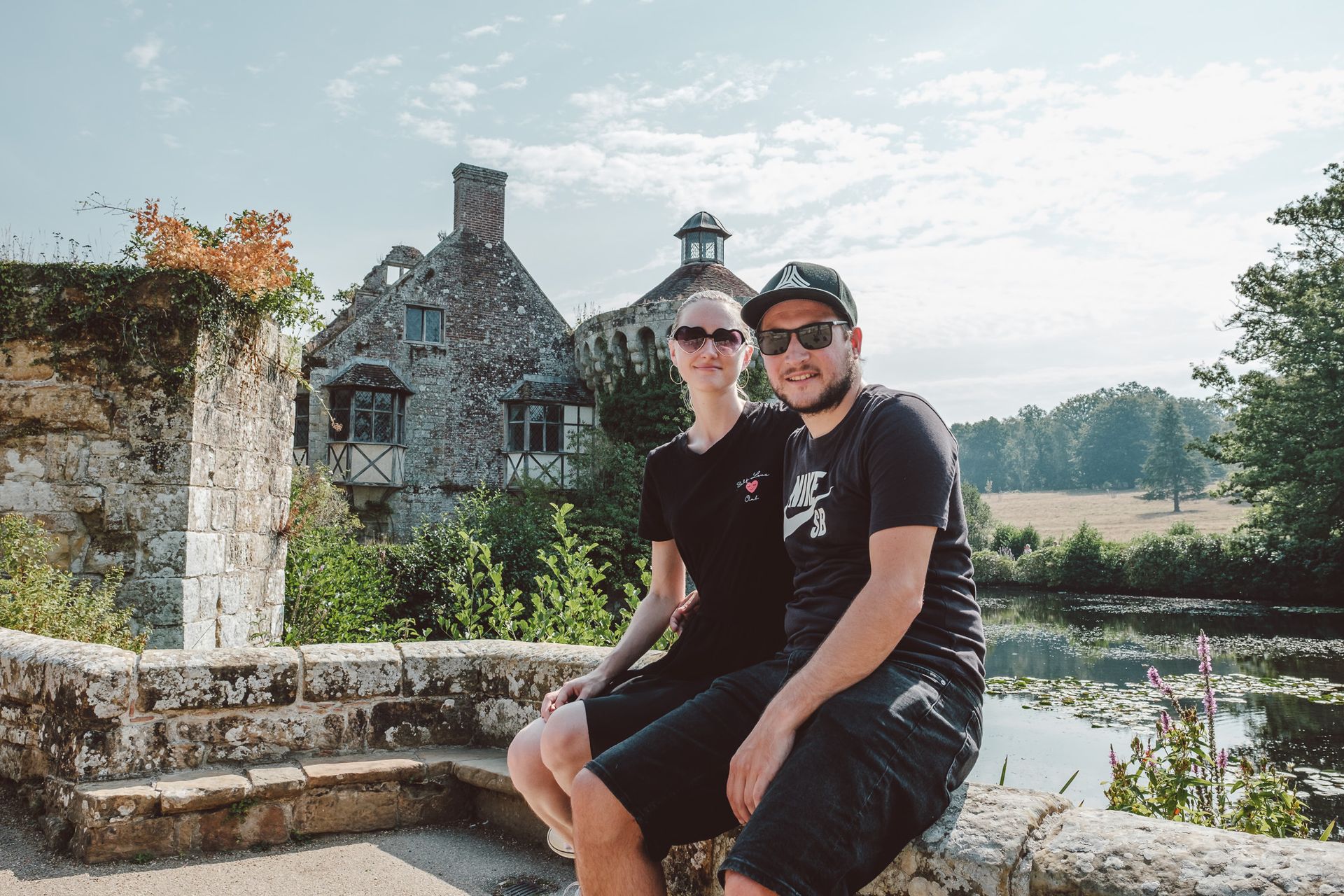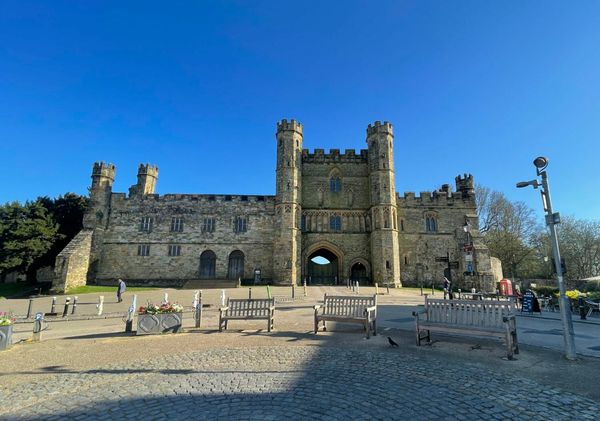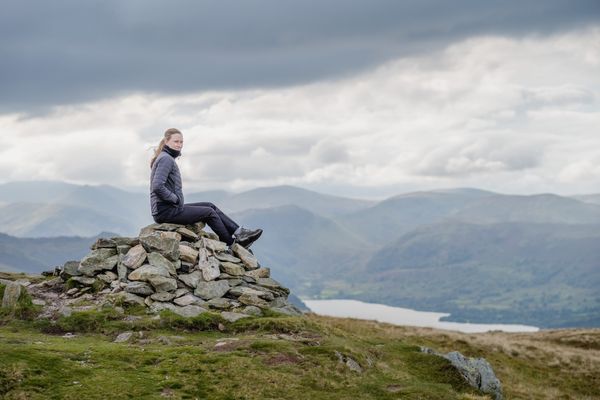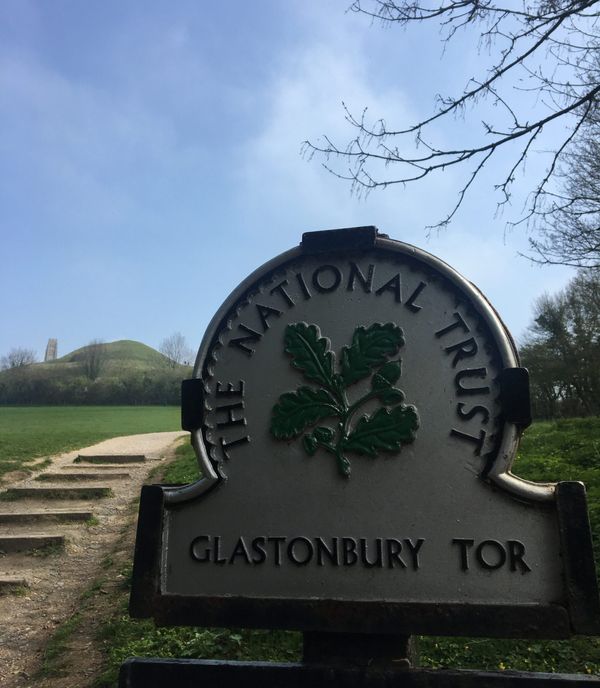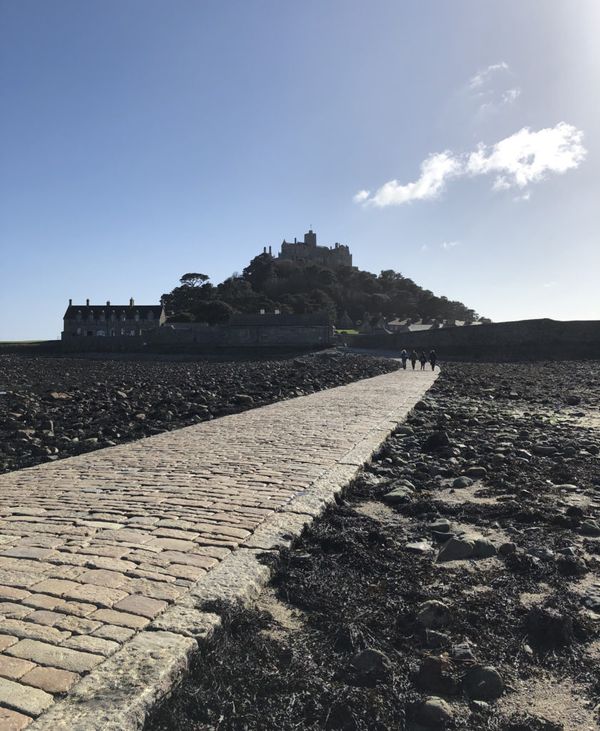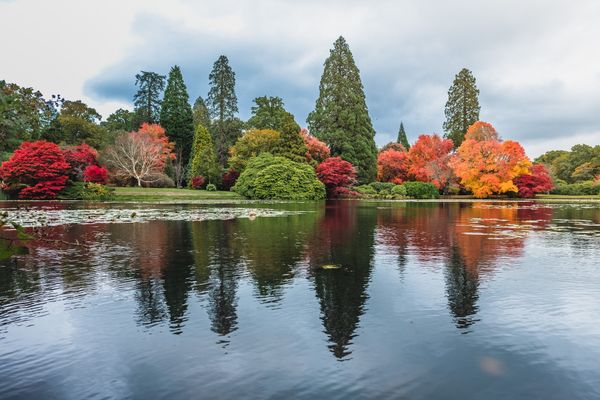If you don’t know by now, we LOVE being National Trust members! There are hundreds of properties, grounds and National Trust owned areas across England, and while these places are sometimes free to the public, most estates require payment to visit the houses or at least use the car park. Whether you like exploring historic properties, hiking across wild land, or admiring pristinely maintained gardens, our top National Trust places in South East England provide something for everyone. Be sure to check out other posts on our blog for more inspiration for your next National Trust visit!
Knole Park
Situated in our hometown of Sevenoaks, Kent, we’ve spent many hours in Knole Park throughout the years and it’s our go-to place for a peaceful walk in nature when we return to visit our families. Dogs must be kept on lead at all times as the Park’s 947 acres are home to around 350 deer that are owned and cared for by the Knole Estate, and it’s lovely to admire them as you stroll. Depending on how far you’d like to walk, you can take a long route around the edge of the Park and through ‘the Gallops’ – so named as this long, flat land was used to race horses and hounds in Tudor times.
If the weather’s not so nice, you can always park up and take a short walk around the perimeter of the Jacobean house and end up at the cafe, which has both indoor and outdoor seating. On a fine weather day we recommend taking your cuppa up to the rooftop terrace to admire the Parkland all around. Booking for the House and Gatehouse Tower is essential to guarantee entry, so if you’d like to learn more about the history of this beautiful home make sure you book tickets in advance. Find out more on the National Trust website.
Bodiam Castle
This spectacular 14th century castle, right on the edge of East Sussex, is a fantastic glimpse into medieval times! The ruined interior, with its spiral staircases and battlements, makes for a fascinating tour. Look-out towers, a moat, and the original portcullis – the heavy, vertically-closing gate – spark the imagination and give a real impression of how castle life would have looked all those years ago. To say that it’s in ruins, a lot of the castle has been incredibly well-preserved.
The castle is also one of the largest bat roosts in the UK! We chose to arrive early on site for our visit to gain entry when the castle first opens at 10am, so we could enjoy exploring with fewer people around. Even so, we didn’t manage to spot any winged buddies! A walk around the parkland and wider landscape rewards visitors with even more history, as not far from the castle sits a pillbox from the Second World War, built in 1940. There’s also a plethora of wildlife, from the noisy ducks welcoming you to the castle, to the koi, eels and carp living in the castle’s moat. A must-visit for history-lovers and wildlife-lovers alike. Find out more on the National Trust website.
Nymans
The West Sussex countryside is beautiful in any season, though the Grade II listed gardens at Nymans really come alive on a sunny Spring or Summer day. With rare and unusual plants in bloom, and the partially ruined house making for a striking backdrop to the greenery, it’s like something from a film set! Even during seasons when the plants are not yet flowering, the views across Sussex Weald while walking the pathway around the perimeter of the gardens are breath-taking. There’s no need to book to visit any part of Nymans, though we always recommend arriving earlier in the day to avoid crowds.
Unfortunately dogs are only permitted in the gardens during Winter, and only between 1.30-4pm. When we’ve visited with four-legged friends in the Summer, we’ve enjoyed long walks through the surrounding woodland instead where dogs are permitted all year round, as long as they are kept under close control. The paths can become muddy as the woodland is heavily shaded, though if you’ve got good walking boots you and your pooch won’t have any problems! Find out more on the National Trust website.
Birling Gap and the Seven Sisters
While the National Trust owned Dover cliffs are world famous, if you’re looking for a truly wild clifftop walk in a more scenic countryside location, we’d highly recommend you head to the coast at Birling Gap instead. The National Trust owns and maintains the land here too, with Birling Gap providing a point of entry for coastal walks, and the car park, National Trust cafe, shop and visitor centre situated on the cliff top. The Seven Sisters is a series of seven white chalk cliffs in the South Downs National Park, and is one of the longest stretches of undeveloped coastline on the South coast. We’ve enjoyed many long, rambling hikes across the Seven Sisters, where the undulating landscape makes for a longer walk than it looks!
You can go fossil-hunting in the pebbles on the beach below, or discover the many rock pools teeming with marine life. At various points throughout the year, visitors may find the beach closed due to risk of cliff erosion, and no matter the time of year it is always vital to walk at least five metres from the edge if you’re at the top of the cliffs as they are prone to collapse. Dogs are welcome anywhere along the Seven Sisters, under close control, and owners must be aware of grazing livestock, ground-nesting birds, and snakes when the weather is warmer. Adders and lizards like to bask in the sunshine on the grassland, so it’s best to admire them from a distance and keep your four-legged friends close-by for an enjoyable walk for all. Find out more on the National Trust website.
Scotney Castle
The second castle on our list, but for good reason! At Scotney in Kent, you’ll not only find a 14th century moated castle but a Victorian country mansion too, all within a stunning woodland estate. The castle is in ruins, though we think this makes it all the more interesting, and it is the centrepiece of a picturesque, meticulously-designed garden. Exploring the criss-crossing paths here, visitors are treated to hidden treasures, such as a heather-thatched ice house, a Victorian boat house, secret pathways and woodland glades to get lost in. With 780 acres of estate there are lots of walks to enjoy with a dog at your side, and pooches are also welcome in the tea room, shop and gardens as long as they are kept on-lead. The National Trust provide paw washing facilities here, and doggy ice creams are available in the tea room so your dog can enjoy a post-walkies treat while you sip a cuppa!
For those who love to delve into the past, the mansion at Scotney contains over 10,000 objects, making it the largest National Trust collection in the South East. There’s a large library of Victorian books, as well a collection of furniture, ceramics and decorative objects, all left as they were by the last owner. All treasures well-worth the visit. Find out more on the National Trust website.
Chiddingstone village
The National Trust bought this village in 1939 in order to conserve its historic buildings. This incredibly well-preserved one-street Tudor village is one of the oldest villages in Kent, with buildings dating back to the 15th century. It’s no wonder it has been used in several period films and tv shows over the years, as over 70% of the buildings are more than 200 years old.
There is a large sandstone rock formation in the heart of the village known as the ‘Chiding Stone’, which is said to have been used as a place of punishing or ‘chiding’ wrong-doers. Legend has it that this is how the village got its name. Whenever we visit Chiddingstone we truly feel it’s like stepping back in time. It’s a fantastic place to come to get a real slice of history, or at least a slice of cake in the Tulip Tree tea room, which contains one of the oldest working shops in the UK. One for real history lovers! Find out more on the National Trust website.
If you found this post helpful, please support our blog by donating as little as £1 to our running costs! Thank-you!

We are Chris+Suze
Latest Posts

National Trust
Being National Trust members gives us free access to some of the most beautiful parklands and properties across the UK! Investing in membership even just for a year is definitely worth it.

Thank you for reading!
We hope you’ve enjoyed this post! For more posts about great places to visit, head to our blog or follow us on Instagram and Facebook for photos and videos from our travels! Let us know in the comments – have you visited these National Trust places? Or has our post inspired you to go!
